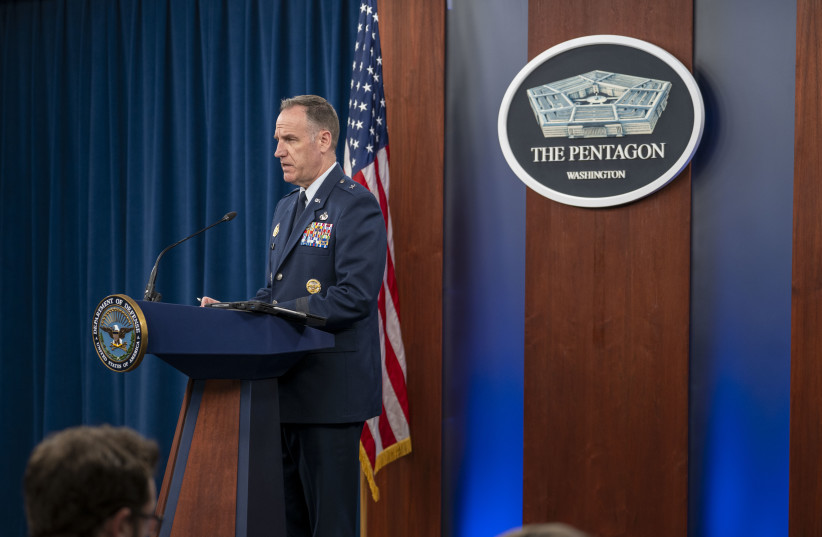US Army vessels that are making their way toward the coast of Gaza to build a temporary pier to supply humanitarian goods could be in position “very soon,” US Pentagon Press Secretary Maj.-Gen. Pat Ryder said on April 23 at a press conference. He was answering questions from the press and was asked about the US plans, which go back several months, to boost humanitarian aid via this novel approach of building a temporary pier or floating dock off Gaza.
“So as I understand it, as of right now, there has been no physical construction of the temporary pier or the causeway. As we’ve discussed, you know, there is a – for lack of a better term, sort of a checklist that one is going to follow in order to implement this capability,” Ryder said. “As Central Command and US Army Central go through that checklist, we are positioned to begin construction very soon, in the very near future, but you want to do those steps in order so that by the time you are erecting this causeway and temporary pier, that all of the pieces are in place and that you can begin operating.”
Moving in from Cyprus
This illustrates the complexity involved in the operation. The US has sent an armada of five ships, one of which was left off the coast of Africa, to help build the pier. According to vessel tracking data, the USAV Monterrey is still in port at Crete in Souda Bay at a naval facility. The USAV James Loux has moved positions in the same bay but may be waiting to sail toward Cyprus and Gaza. USAV General Frank S. Besson and the USAV Matamoros appear to have left Souda Bay and are heading toward Cyprus. Frank Besson is in the lead and looks like it could be off the coast of Gaza or Israel in several days. The Matamoros passed the Crete part of Heraklion recently and will soon begin the multi-day trip towards Cyprus or Israel.

The USAV Wilson’s Wharf was apparently left behind off the coast of Africa for reasons that remain unclear. As such the armada, now stretched out over a hundred miles of ocean, continues to make its way to Gaza. They have now been at sea for a month and a half after leaving port in Fort Eustis around March 12.
Ryder indicated at the Pentagon on April 23 that the US estimates that keeping this plan on track will mean starting work in early May on the pier. “As I understand it, all the necessary vessels are within the Mediterranean region and standing by, as I mentioned, to begin construction when given the order to do that. Again, you know, there is a process and procedure that will have to be followed,” he said. He also discussed the complex other aspects of the project, such as working to make sure the area is secure and also working with local partners which “include NGOs, working with USAID, there’s a very specific process and timeline that needs to be implemented. And so again, as I understand it, we’re on track at this point to implement that,” he said.
There is still some lack of clarity on how this will all work. It should mean a maritime corridor from Cyprus can be maintained. Ruder said the pier would be “several miles off-shore” and that it can receive military and civilian vessels and then items can be loaded onto the floating dock and then moved to the shore. Vessels will then take the aid to a temporary causeway on shore and the aid will be put on trucks driven by local NGOs.
This leaves questions about which NGOs. An airstrike on a World Central Kitchen convoy caused that group, which was working from Cyprus with UAE backing and using a Spanish ship, to pause its work in early April.
It was clear from the questions at the Pentagon that much remains to be worked out, or that not everyone is privy to the plans afoot for this complex operation. The US military, and the US army in particular, likely wants to see if this capability to build a floating pier in a real-life crisis will work as planned. In the past, these units have trained for this, but this is a unique scenario. Moving these transport ships, which sit low in the water and move along at a slow pace of around 10 knots, all the way across the Atlantic, is one of those interesting missions that pops up, enabling a military to try carry out something it has practiced over the years.
